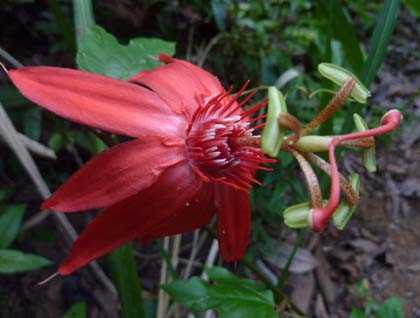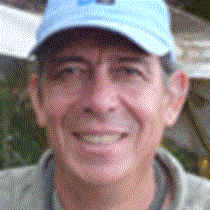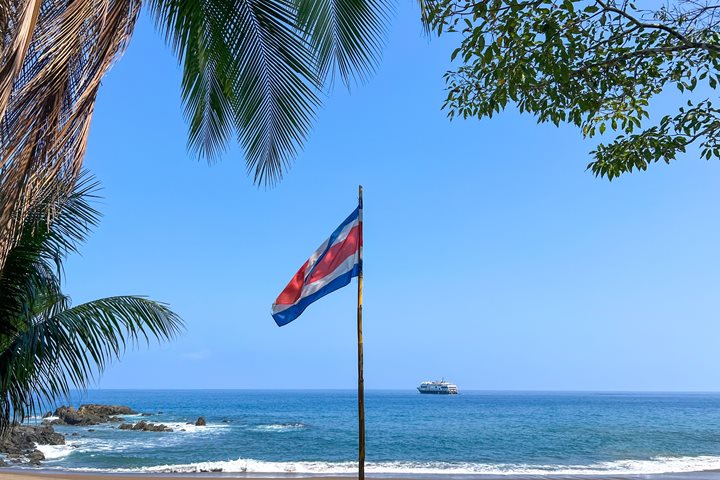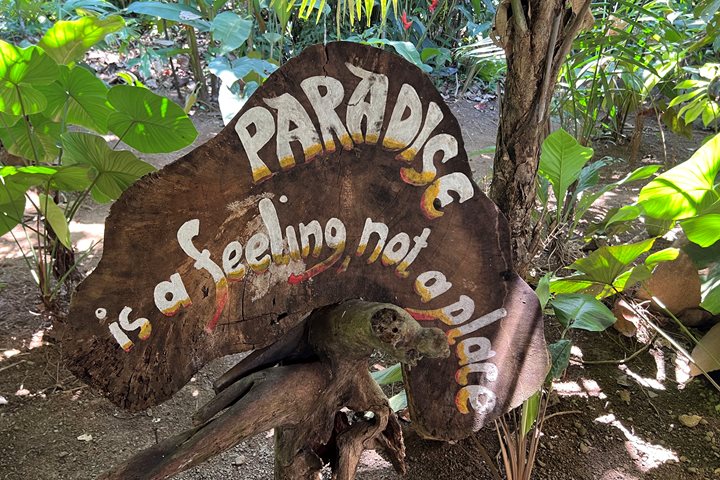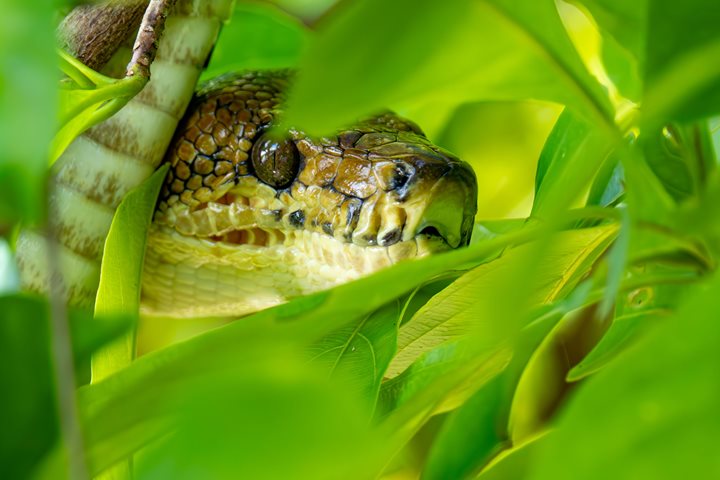The tropical wet forest contained in the Osa Peninsula is widely considered the most species-rich in Central America. Species found here are critically endangered or absent in the rest of the country. Right after breakfast we went for a nature walk on the private preserve of Caletas bordering the Corcovado National Park, and soon we saw why this part of Costa Rica is considered one of the most intensive biological places of the planet.
During our two-hour walk we got to see Scarlet macaws flying free and perching up in trees so close to us that we could not believe it! A troop of White-Faced capuchins monkeys were in the picnic area searching for insects to eat, while we were getting ready for our nature walks. Way in the back and through the scope we saw the spectacular Roadside hawk perch up in a branch.
We went back to the ship for lunch, and the National Geographic Sea Lion cruised twenty minutes south in order to drop anchor in front of the well known Corcovado National Park.
Some of the guests took the waterfall trail, a short trail that leads up a nameless creek that begins just behind the park ranger station. They saw quite a few cycad plants along the banks, as there appeared to be healthy populations of this “living fossil” plant. They also saw the beautiful flowers of the Passion Flower vines all over the trail blooming.
The trail ended at a lovely waterfall, and later on, this group went swimming in a river pool. This was one of the highlights of the day: taking a dip and cooling off in the middle of the rainforest. It was a remarkable moment.
The weather could not have been better for our nature walks to explore one of the most remote parts of Costa Rica.

